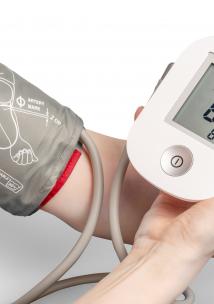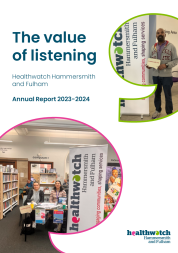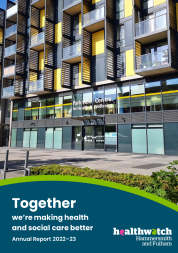BP@Home Patient Evaluation - Emerging Findings

Summary of report content
Introduction:
In spring 2020 Healthwatch England approved budget to expand the remote care work stream into a third phase focused on remote monitoring (previously looked at remote consultations in primary care).
Following consultation with NHS England and NHSX, the decision was made to focus on the Blood Pressure Monitoring @ Home programme (BPM@Home), whereby patients who have hypertension (high blood pressure) are given blood pressure monitors to use at home.
Project grants were awarded to five local Healthwatch corresponding to the five early mover sites for the BPM@Home programme. These were:
- Healthwatch Darlington
- Healthwatch Oxfordshire (site also covers part of Bucks)
- Healthwatch Hampshire
- Healthwatch Hammersmith and Fulham
- Healthwatch Gloucestershire
Aim:
Deliver an evaluation of the BP@Home programme that will allow patients’ experiences to be understood and measured with a view to delivering recommendations for the roll-out of BP@Home.
Method:
484 online survey responses and 26 depth interviews (self-selected – anyone who uses a blood pressure monitor at home).
Desk research shows that:
One in four people have high blood pressure in the UK, and it affects people in deprived areas in greater numbers. High blood pressure can lead to heart attacks, strokes, and disability, and is an early indicator for a wide range of other health conditions. Early detection and management of BP could potentially reduce the burden on the NHS of these life-limiting conditions and deliver better outcomes for the patients. This is already a long-term target for the NHS Source: Health matters: combating high blood pressure - GOV.UK (www.gov.uk).
Key Findings:
The positive sentiment around remote blood pressure monitoring at home far outweighed the negatives. However, in practical terms, there are key gaps in GP processes that negatively impact patient experience. This is demotivating for the patient and means opportunities to address blood pressure problems could be missed.
Gaps include:
•Information on blood pressure: why it should be monitored, risks, what “normal” readings look like for the individual, changes to lifestyle that can reduce risks, how to effectively monitor over time, what the numbers mean, and when to act (call doc/call A&E etc.).
•Guidance and support around taking and submitting of blood pressure readings.
•Feedback on submitted readings and provision of on-going support.
•Advice what to do to improve/stabilise blood pressure (medication, life-style, diet etc.).
•Adequate solutions for submitting readings efficiently. It is still a paper process for most!
•Acknowledgement of concerns amongst patients and access to GP if required.
Respondents are mostly able, willing, and keen to use digital means to submit blood pressure readings and will also consider using other forms of remote monitoring - providing certain conditions are met: INFORM, GUIDE, FEEDBACK, ADVISE! Many are keen to take more personal responsibility for their health and wellbeing, but there needs to be a better partnership between GPs and patients for that to work.
Downloads
If you need this document in a different format, please email info@healthwatchhf.co.uk or call 0203 886 0386.

